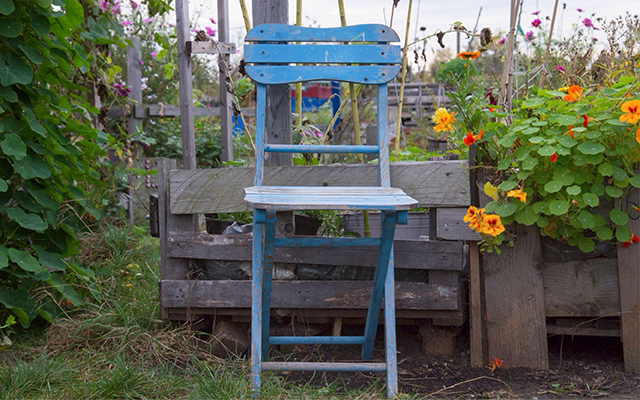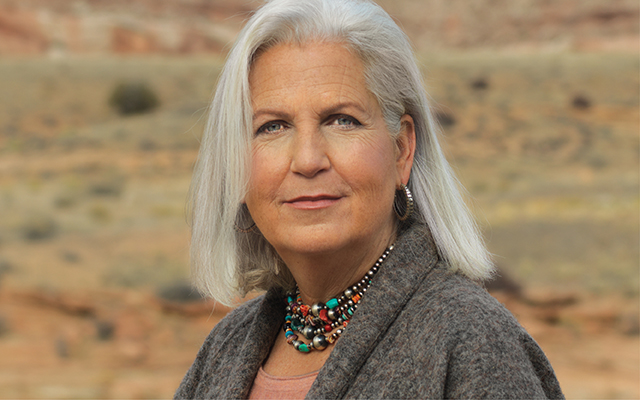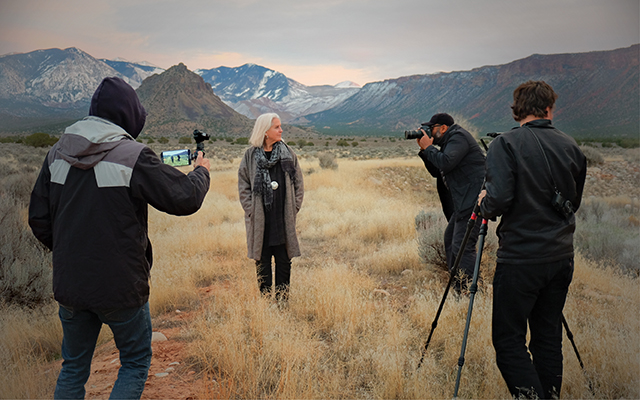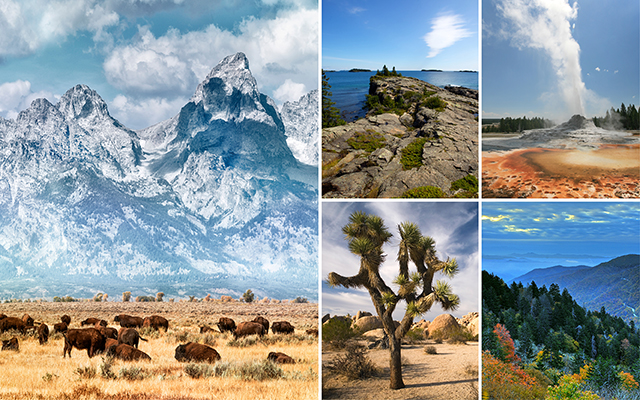Botanist and SUNY professor Robin Wall Kimmerer, PhD, has spent decades helping her students understand the importance of cultivating a mutually beneficial relationship with the environment. A member of Oklahoma’s Citizen Potawatomi Nation, Kimmerer has also focused considerable energy on introducing fellow scientists to indigenous ecological wisdom.
The founding director of the Center for Native Peoples and the Environment and author of Braiding Sweetgrass shares some of the lessons she’s learned while creating her own deep connection with the earth.
Q&A
Experience Life | What’s your history with the land and what do you see as the tension between scientific and indigenous teachings?
Robin Wall Kimmerer | I didn’t grow up with intact traditional knowledge, but I grew up with traditional values. My family was a victim of the boarding-school era — part of deliberate assimilation by the federal government after native peoples were forcibly removed from their land and their language was taken away. When that was deemed insufficient, the government began to take native children away.
At 9 years old, my grandfather was taken from his family in Oklahoma and sent to the Carlisle Indian School in Pennsylvania, where the mission was “Kill the Indian to save the man.” It was a time of a great loss of knowledge.
Nonetheless, I grew up with an idea of the inspirited nature of the world and saw other elements in nature as teachers. This deep love and respect for the natural world drew me to science.
But what I’ve found is that science is a different, powerful way of looking at the natural world. It has an objective and quantitative view of nature that largely puts human beings outside of nature and reduces other elements of nature to objects.
When I moved into the realm of science, I noticed that the questions scientists raised were not “Who are you?” and “What can plants tell us?” but “What is it?” and “How does it work?” I believe there’s value in asking the questions science does not ask, too.
EL | What’s the meaning of land for your culture?
RWK | In the indigenous worldview, land is the source of our ancestral connection and identity, and the home of our nonhuman relatives. It’s our pharmacy, library, and source of knowledge. Land is sacred. It’s the place where we enact our moral responsibility.
There are multiple, rich dimensions to what land means that are incompatible with the Western worldview — that it’s basically property, capital, services, and natural resources. It’s hard for land to be property and sacred at the same time.
EL | What are the implications of changing how we see land and reconnecting to it?
RWK | In this time of climate change and the sixth extinction [an accelerating loss of species diversity], we have to understand that we each have the role of giver to, as well as taker from, the land. We are participants in abundance. We need to see that humans are inseparable from our other living relatives and we have a responsibility for them. It’s not about rights to land; it’s about responsibility for land.
Being removed from the land is an impediment to seeing how utterly dependent we are on it. When we don’t know where our food, water, and power come from, we don’t understand the impacts on other facets of the land and don’t view how we consume and live as ethical decisions.
An understanding of your connection to the land is a source of tremendous joy because you don’t feel alone in the world. You know there are all these other beings out there, intelligences other than our own that can teach, guide, and certainly support us. We would not be here without them. It impels our gratitude and spirit of reciprocity to say that, in return for all the gifts of the earth, we as human beings are giving our gifts back again.
EL | What are some things we can do to give back to the earth?
RWK | There are so many. Use your frontyard and backyard not for show or a status symbol but to create a landscape that gives back to nature. Providing wildlife, pollinator, and songbird habitat is no small thing given the threats they face.
Support or get engaged in local habitat restoration at nature centers and parks, and see public lands as sources of well-being and not as sources of oil wells.
The food movement is another powerful way to reciprocate. Rather than buying high-carbon foods, eat a climate-friendly diet by doing things like buying locally.
Most importantly, the way you vote has a huge impact, as does supporting direct action like marches and other advocacy efforts. Raise a ruckus, because if our leaders don’t know how much we care, they won’t do anything!
EL | What do you do in your own life to stay connected to the land?
RWK | I try to begin every single day outdoors with gratitude. I give gratitude to the birds for song, to the sun for waking me, to the grasses for growing, to raspberries for ripening. This teaches me to be mindful.
One of the things that is important to me is greeting organisms by name. It’s easier for me — I’m a botanist! But that attentiveness to nature and being aware of other organisms and their contributions is satisfying.
I garden. I also have a seven-acre piece of land I care for, on which I’ve planted what I call my climate-change forest. I live in the far North, but I’ve been planting Southern trees because I want this to be a forest in the future, and I want to build in resilience.
I work hard to manage it for pollinator and wildlife habitat because I see the results in bees, butterflies, bluebirds, and coyotes and all those who use it. It’s my favorite way of giving back and favorite form of recreation. I’m planting trees and removing invasive species to nurture the land to good health — which keeps me in good health, too.




This Post Has 0 Comments